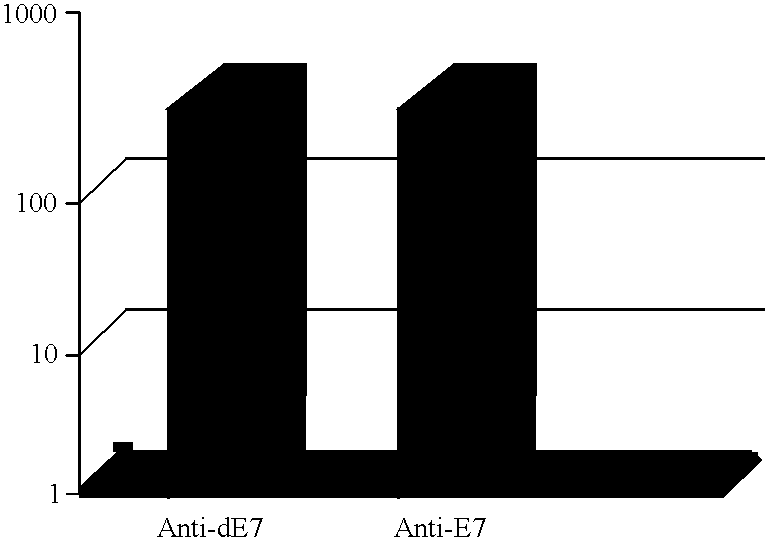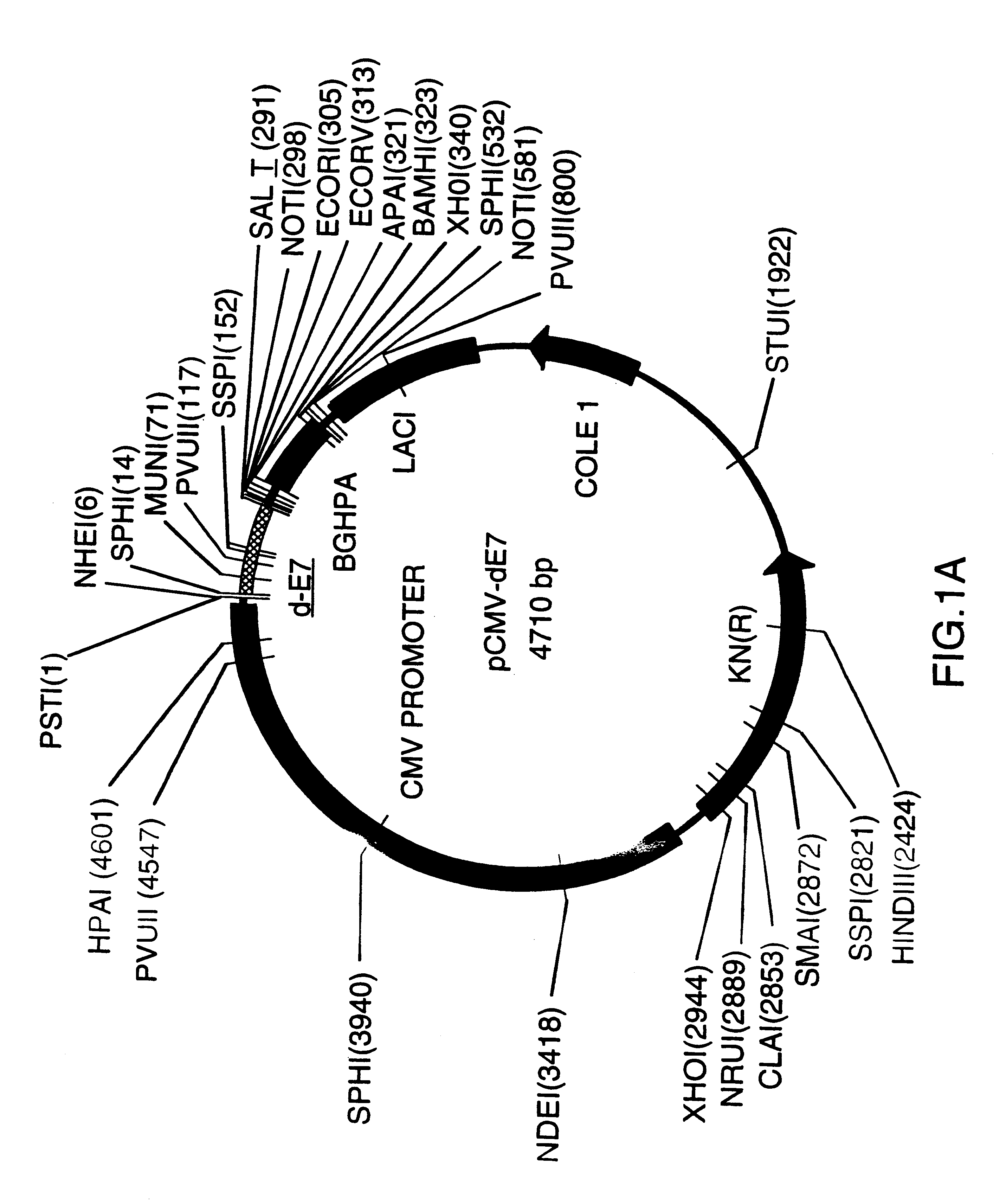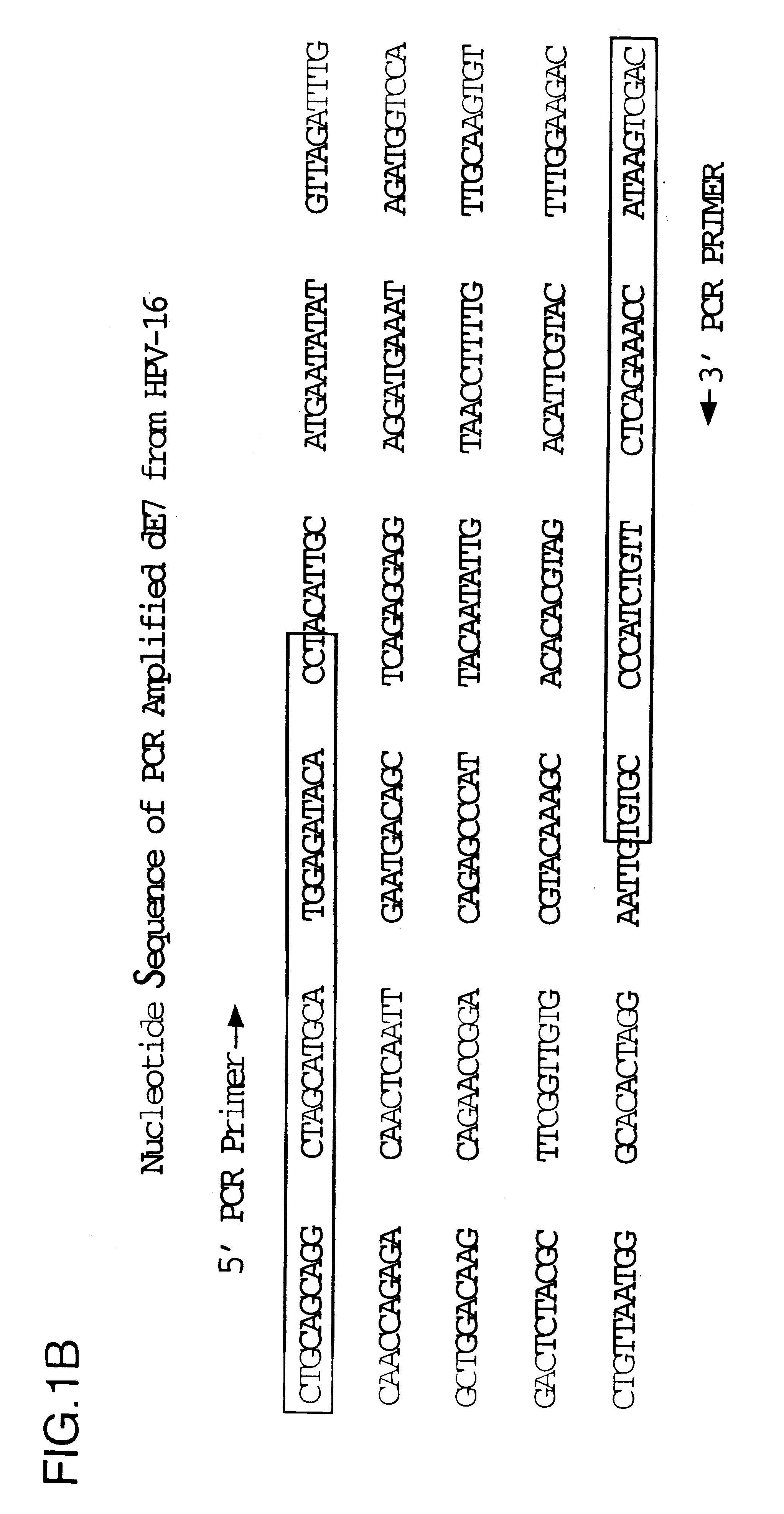Vectors for DNA immunization against cervical cancer
a technology of cervical cancer and immunization, applied in the field of cervical immunization with dna immunization, to achieve the effect of slow, sustained release of antigens, and significant improvement of immunogenicity
- Summary
- Abstract
- Description
- Claims
- Application Information
AI Technical Summary
Benefits of technology
Problems solved by technology
Method used
Image
Examples
example 1
This Example describes the immunization protocol employed herein.
Female C57Bl / 6 mice weighing 18 to 20 grams were obtained from Charles River (St. Constant, Quebec, Canada). The mice were housed in microisolators in accordance with guidelines as set out by the Canadian Council on Animal Care (CCAC). Ten animals were included in each treatment group. On Day 0, the mice were immunized with 100ug of each respective DNA construct, via either the intramuscular route (i.m.) in the anterior tibial muscle or the intradermal route (i.d.). The immunizations were repeated, with equivalent doses of each construct, on Days 21 and 42 of the study. Serum samples were obtained from mice on Days 20, 40 and 56.
example 2
This Example describes the protocol for tumor cell challenge.
Two weeks following the last booster dose with the DNA construct following the procedure of Example 1, each mouse was injected subcutaneously (s.c.) in the nape of the neck with a dose of 5.times.10.sup.5 live C3 tumour cells. The C3 tumour cell line was kindly provided by R. Offringa and C.Melief. The C3 cell line was created by transfecting B6 mouse embryo cells with the complete genome of HPV-16 was transformed with the ras oncogene. The expression of the HPV 16 oncogenic proteins E6 and E7 are required to maintain the transformed state.
After the injections were administered, the mice were examined three times per week for the duration of the study. Tumour measurements were taken using vernier calipers. The volume of the tumour mass was calculated using the following formula: volume=ab.sup.2 / 2 where a=longer diameter and b=smaller measurement of the two. Mice that remained tumour free for a period of approximately thre...
example 3
This Example describes the E7 and dE7-specific IgG immunoassays (EIA).
Nunc Maxisorp immunoassay plates were coated overnight with either recombinant E7 or recombinant dE7 antigen at a concentration of 10 .mu.g / mL diluted in 50 mM carbonate buffer pH 9.6. The next day the plates were washed in PBS containing 0.05% Tween 20 (PBS-T) and then blocked with 1% milk solution for one hour at room temperature. Following the blocking step, the plates were washed in PBS-T and the serum samples were added, at various dilutions, to the plates. The samples were incubated on the plates overnight at 4.degree. C. The samples were washed off the plates the next day with PBS-T and a peroxidase-labelled sheep anti-mouse IgG conjugate was added at a dilution of 1 / 25,000 to each well. After a one hour incubation at room temperature, the plates were washed in PBS-T and the calorimetric reaction was developed using TMB substrate (ADI). The reactions were read at 450 nm in a Dynatech MR 5000 96-well plate r...
PUM
| Property | Measurement | Unit |
|---|---|---|
| concentration | aaaaa | aaaaa |
| length | aaaaa | aaaaa |
| kanamycin resistance | aaaaa | aaaaa |
Abstract
Description
Claims
Application Information
 Login to View More
Login to View More - R&D
- Intellectual Property
- Life Sciences
- Materials
- Tech Scout
- Unparalleled Data Quality
- Higher Quality Content
- 60% Fewer Hallucinations
Browse by: Latest US Patents, China's latest patents, Technical Efficacy Thesaurus, Application Domain, Technology Topic, Popular Technical Reports.
© 2025 PatSnap. All rights reserved.Legal|Privacy policy|Modern Slavery Act Transparency Statement|Sitemap|About US| Contact US: help@patsnap.com



